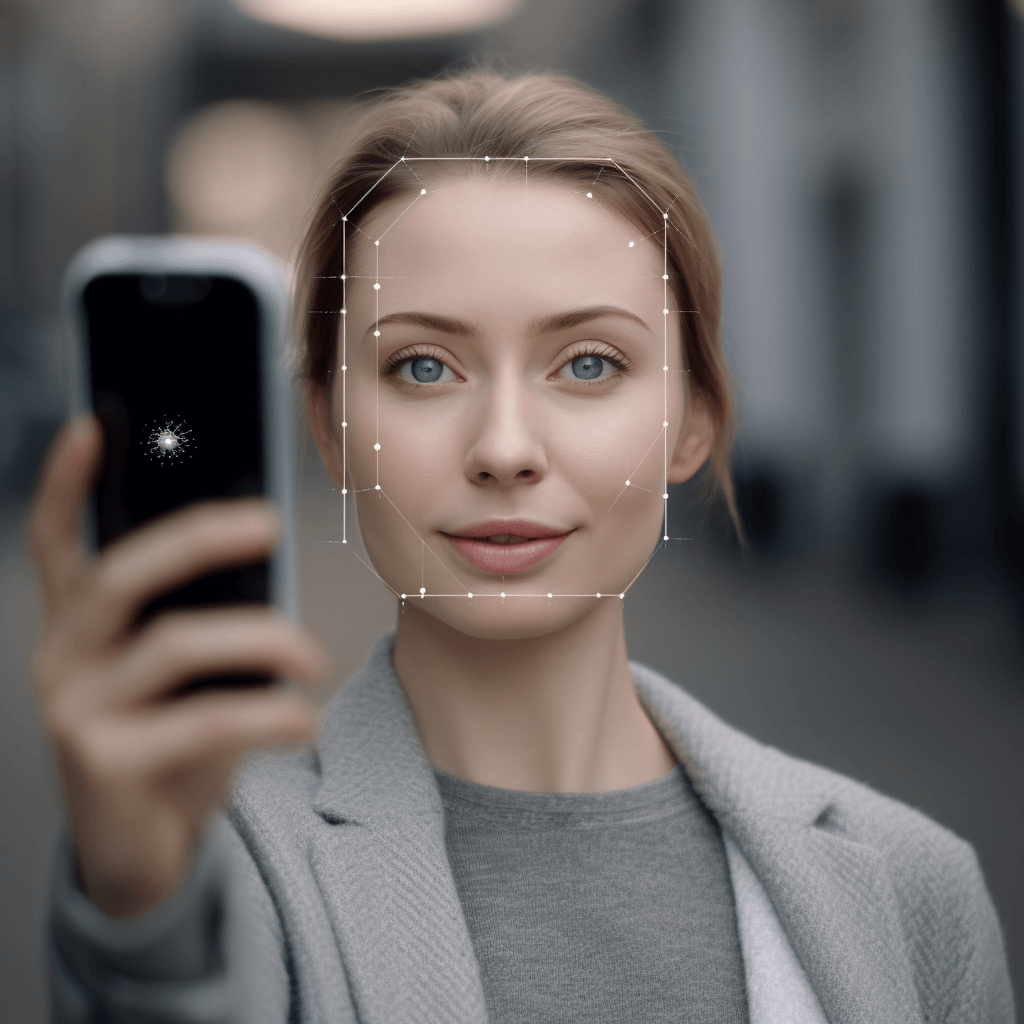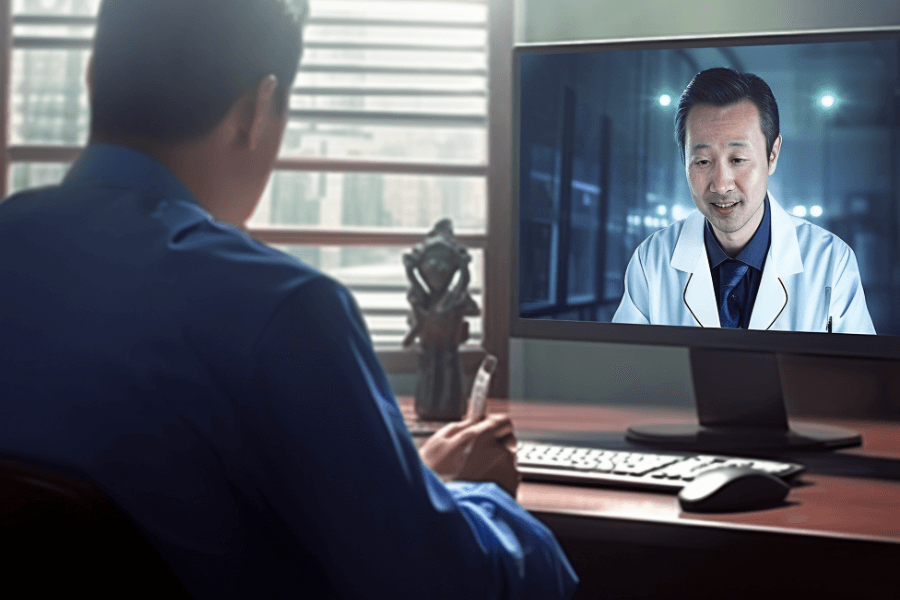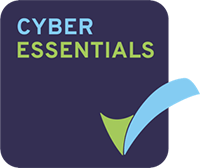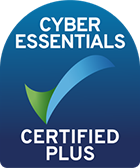Remote health screening has emerged as a powerful tool in the insurance industry, revolutionising the way insurers assess risks and determine coverage. With the advancements in technology, individuals can now remotely undergo health screening using various devices and platforms, offering convenience, accessibility, and cost-effectiveness. However, while remote health screening presents numerous benefits, it also introduces several challenges that need to be addressed to ensure its successful implementation and acceptance.
Understanding Remote Health Screening
Definition of Remote Health Screening
Remote health screening, also known as telehealth screening or virtual health screening, refers to the process of assessing an individual’s health remotely using digital devices and telecommunication technologies. It allows individuals to undergo health assessments, screenings, and consultations without being physically present in a healthcare facility.
Remote health screening has revolutionised the way healthcare is delivered, providing convenience and accessibility to individuals who may have limited mobility, live in remote areas, or have busy schedules. With the use of digital devices and telecommunication technologies, individuals can now receive timely and efficient healthcare services without the need for in-person visits.
Through remote health screening, individuals can monitor their health conditions, track their progress, and receive personalised recommendations from healthcare professionals, all from the comfort of their own homes. This not only saves time and effort but also reduces the risk of exposure to contagious diseases, especially during times of pandemics or outbreaks.
The Technology Behind Remote Health Screening

The rise of remote health screening can be attributed to the advances in technology. Various digital devices and applications, such as smartphones, wearables, and connected devices, enable individuals to monitor their vital signs, collect health data, and transmit it to healthcare professionals for analysis.
Smartphones, equipped with sensors and health tracking applications, allow individuals to measure their heart rate, blood pressure, sleep patterns, and other vital signs. These devices provide real-time data, which can be securely transmitted to healthcare professionals for remote monitoring and analysis.
Wearables, such as fitness trackers and smartwatches, have become increasingly popular in remote health screening. These devices not only track physical activities and calories burned but also monitor heart rate, sleep quality, and stress levels. With the ability to sync with smartphone applications, wearables provide a comprehensive overview of an individual’s health and well-being.
Connected devices, such as blood glucose monitors, blood pressure monitors, and pulse oximeters, have also played a significant role in remote health screening. These devices can be easily connected to smartphones or other digital platforms, allowing individuals to measure and record their health data accurately. The data can then be shared with healthcare professionals for remote analysis and consultation.
Telecommunication technologies, including video conferencing and secure data transfer, facilitate virtual consultations and remote examinations. Through video conferencing, individuals can have face-to-face interactions with healthcare professionals, discuss their health concerns, and receive expert advice. Secure data transfer ensures the confidentiality and privacy of personal health information, making remote health screening a safe and reliable option for individuals.
Overall, the technology behind remote health screening has transformed the healthcare landscape, making healthcare services more accessible, efficient, and patient-centred. However one kind of technology developed by Vastmindz helps underwrite without the needs of wearable devices, simply using the camera on the mobile phone to perform a 40 second selfie video. The vital signs are extracted from the face and then provided to the insurer which simplifies the onboarding process. With continuous advancements in technology, remote health screening is expected to further expand, offering innovative solutions for preventive care, chronic disease management, and overall well-being.
The Rise of Remote Health Screening in Insurance
Over the past decade, the insurance industry has witnessed a significant rise in the adoption of remote health screening. This innovative approach to healthcare has revolutionised the way insurers provide services to their customers. By leveraging technology and data analytics, insurance companies are now able to offer convenient and personalised coverage options.
Factors Driving the Adoption of Remote Health Screening
Several factors have contributed to the growing adoption of remote health screening by insurance companies. Firstly, the increasing demand for convenient healthcare solutions has led insurers to explore innovative ways to provide services remotely. With remote health screening, individuals can undergo health assessments from the comfort of their own homes, eliminating the need for in-person appointments and long waiting times.
Additionally, the rising healthcare costs have prompted insurers to seek cost-effective methods to assess risks and personalise coverage. By utilising remote health screening, insurers can gather accurate and up-to-date information about individuals’ health conditions, allowing for more precise risk assessment and underwriting decisions. This not only helps insurers in managing their costs but also enables them to offer competitive premiums to their customers.
Lastly, advancements in data analytics and artificial intelligence have made it possible to derive meaningful insights from remote health screening data. By analysing large volumes of health data collected through remote screening, insurers can identify patterns and trends that can help in predicting future health risks. This proactive approach allows insurers to offer preventive care and wellness programs, ultimately leading to better health outcomes for their policyholders.
The Role of Remote Health Screening in Modern Insurance
Remote health screening has become an integral part of modern insurance practices. It enables insurers to obtain accurate and up-to-date information about individuals’ health conditions, allowing for more precise risk assessment and underwriting decisions. By leveraging the data collected through remote health screening, insurers can offer personalised coverage options tailored to individuals’ specific needs and health profiles.
Moreover, remote health screening also promotes transparency and trust between insurers and policyholders. By involving individuals in their own healthcare journey, insurers empower them to take control of their health and make informed decisions. This collaborative approach fosters a sense of partnership and mutual understanding, ultimately leading to stronger customer relationships.
Furthermore, remote health screening opens up new opportunities for insurers to innovate and develop value-added services. For instance, insurers can provide virtual consultations with healthcare professionals, enabling individuals to seek medical advice without the need for physical appointments. This not only enhances the overall customer experience but also ensures timely access to healthcare services.
In conclusion, the rise of remote health screening in insurance is driven by the increasing demand for convenient healthcare solutions, rising healthcare costs, and advancements in data analytics. This innovative approach allows insurers to gather accurate health information, personalise coverage options, and promote proactive healthcare. As technology continues to evolve, remote health screening is expected to play an even more significant role in shaping the future of insurance.
Benefits of Remote Health Screening for Insurance
Remote health screening for insurance offers numerous benefits to policyholders and insurers alike. Not only does it provide convenience and accessibility, but it also proves to be cost-effective and enhances data accuracy and privacy.
Convenience and Accessibility
One of the primary benefits of remote health screening for insurance is the convenience it offers to policyholders. Individuals can undergo health assessments and screenings from the comfort of their homes, eliminating the need for travelling to healthcare facilities. This is particularly beneficial for individuals with busy schedules or those who live in remote areas.
Moreover, remote health screening enhances accessibility, especially for individuals in remote areas or those with limited mobility, who may face challenges in accessing traditional healthcare facilities. By providing a remote option, insurers ensure that everyone has equal access to necessary health screenings and assessments.
Cost-Effectiveness of Remote Health Screening

Remote health screening can significantly reduce healthcare costs for insurers and policyholders alike. By eliminating the need for in-person consultations and physical examinations, insurers can save on overhead costs associated with healthcare facilities and medical staff. These savings can then be passed on to policyholders in the form of lower premiums and reduced out-of-pocket expenses.
Additionally, remote health screening allows for more accurate risk assessment and personalised coverage options. By collecting real-time health data, insurers can better understand an individual’s health status and tailor insurance coverage accordingly. This not only benefits policyholders by ensuring they receive appropriate coverage but also helps insurers mitigate risks and prevent fraudulent claims.
Enhancing Data Accuracy and Privacy
Remote health screening enables insurers to collect accurate and real-time health data, resulting in improved underwriting decisions. By relying on objective data obtained directly from individuals, insurers can reduce the reliance on self-reported information, which can be subjective and prone to errors. This leads to a more accurate assessment of an individual’s health status and helps insurers determine appropriate coverage and premiums.
Furthermore, remote health screening platforms prioritise data privacy and security. They employ robust encryption measures and adhere to strict privacy regulations to ensure that individuals’ sensitive health information is protected. This instils confidence in policyholders, knowing that their personal health data is handled with the utmost care and confidentiality.
In conclusion, remote health screening for insurance offers a range of benefits, including convenience, accessibility, cost-effectiveness, and enhanced data accuracy and privacy. As technology continues to advance, remote health screening is likely to become an integral part of the insurance industry, providing individuals with a seamless and efficient way to assess their health and obtain appropriate coverage.
Challenges in Implementing Remote Health Screening
Technological Barriers
Implementing remote health screening requires robust technological infrastructure, including reliable internet connectivity, compatible devices, and user-friendly software applications. However, not all individuals may have access to these resources, particularly those in underserved areas or older populations who may not be technologically proficient. Bridging the technological divide and ensuring equal access to remote health screening pose significant challenges.
Regulatory and Compliance Issues
The rapidly evolving landscape of remote health screening introduces regulatory and compliance challenges for insurers. Many countries have specific regulations governing telehealth services, and insurers must ensure compliance to avoid legal issues. Additionally, insurers need to develop clear policies and procedures regarding data collection, privacy, and security to protect individuals’ sensitive health information and maintain trust.
Patient Trust and Acceptance
While remote health screening offers numerous benefits, building patient trust and acceptance is crucial for its widespread adoption. Individuals may have concerns regarding the accuracy of remote assessments compared to in-person consultations. Educating individuals about the effectiveness and reliability of remote health screening, ensuring transparency in data usage, and addressing privacy concerns are essential in gaining patient trust and fostering acceptance.
Addressing the Challenges of Remote Health Screening
Strategies for Overcoming Technological Barriers
To address the technological barriers, insurers can collaborate with technology providers to develop user-friendly platforms and applications. Initiatives such as providing technological assistance, promoting digital literacy, and offering subsidies for compatible devices can help bridge the digital divide and ensure equal access to remote health screening for all individuals.
Navigating Regulatory and Compliance Issues
Insurers must stay updated with the evolving regulatory landscape and collaborate with regulatory authorities to shape policies that facilitate the adoption of remote health screening. Developing robust internal processes, conducting regular audits, and implementing stringent security measures can help insurers ensure compliance with data protection and privacy regulations.
Building Patient Trust in Remote Health Screening
Addressing patient concerns and building trust requires proactive communication and education. Insurers can disseminate information about the effectiveness and benefits of remote health screening through various channels, including online resources, social media, and partnerships with healthcare professionals. Transparency in data usage and privacy protections should be clearly communicated to alleviate any privacy concerns individuals may have.
In conclusion, remote health screening has revolutionised the insurance industry, offering numerous benefits such as convenience, cost-effectiveness, and enhanced data accuracy. However, implementing remote health screening also presents challenges, including technological barriers, regulatory compliance, and patient trust. By adopting strategies to overcome these challenges and ensuring equal access and trust, insurers can fully leverage the potential of remote health screening to improve risk assessment, personalise coverage, and ultimately enhance the insurance experience for policyholders. Learn how Vastmindz has worked with leading re-insurers to bring AI to the the underwriting process and get in touch.


